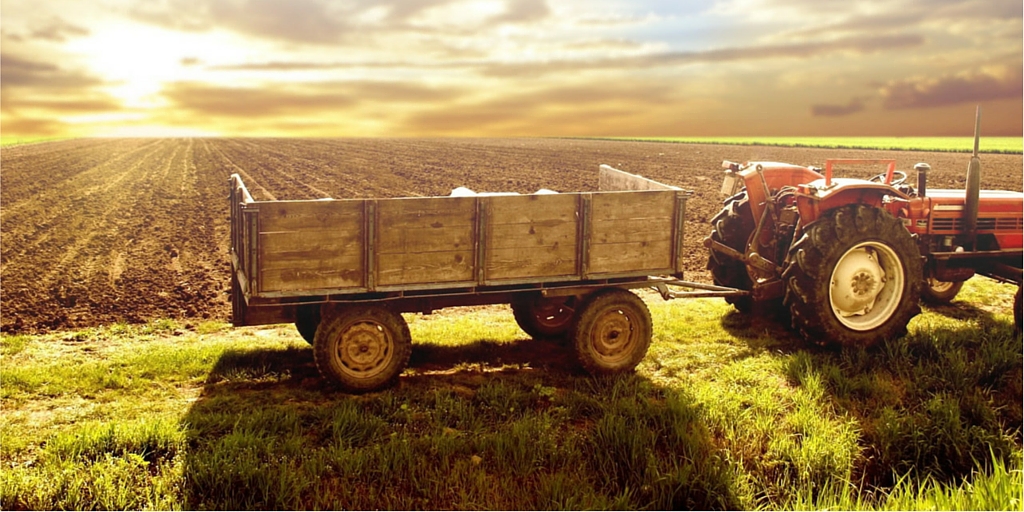How ProducePay is Flipping Agricultural Finance on its Head
Posted by: Paige Craig
Posted on 02/22/2016

Posted by: Paige Craig
Posted on 02/22/2016

Food production isn’t keeping up with the global demand, as Earth’s middle class is expected to double – with consumption levels alongside it – by 2030. The population’s demand for nutrients has outpaced production since the mid-1990s, with the most acute shortages occurring in developing economies. Drought and erratic weather conditions from global climate changes have accelerated the problem even further, with estimates that it will reduce crop yields 10-20%.
Fortunately over the last few years there’s been a surge of interest from tech entrepreneurs and venture capital firms in confronting this challenge by leveraging the latest advances in technology. In 2016, the modern farm has moved far beyond merely genetically enhanced seeds; it’s becoming a conglomeration of robots, aerial imaging, and data analysis. There is a new wave of innovation to make farms “smart,” ultimately resulting in substantially increased crop production.
As Pablo Borquez Schwarzbeck (CEO of our portfolio company ProducePay) points out however, while nearly all the attention and capital is flowing toward improving crop yields, that’s just one piece of the bigger puzzle. As yields improve and overall production increases, there remains a massive financial bottleneck holding back the industry’s ability to actually bring more of those crops to market.
…
Once a farm has fresh, nutrient-rich produce ready to sell, they get it to market by way of a distributor (a.k.a. a wholesaler), who takes their fresh produce and sells it to retailers like grocery stores and supermarket chains for a commission of 8-12%. It typically takes 45 days from the date a farm ships its produce to when it – and the distributor – actually gets paid, however. And farms, whose expenses are disproportionately weighted to peak harvest season, don’t have the cash flow to wait that long.
Normally, a business owner would negotiate a line of credit with a bank to handle a cash flow problem like this, but banks won’t lend to farmers. In their eyes farms are too high risk because the collateral – the farm’s produce – is perishable, hard to track, and hard to value. To enable farmers to cover short-term expenses, the distributors in the industry – whose wellbeing is tied to the farmers’ shipments – took on the role of making loans to farmers that get repaid a few weeks later once money flows back upstream.
Distributors are in the business of wholesaling produce, however; they don’t want to be banks. Their need to make loans to farms has created a bottleneck holding back their growth: they can only work with as many farms as they can afford to lend money to. So as new technology and farming practices improve yield, the financial bottleneck is only going to become more strained. Distributors can’t bring massive amounts more produce to market because they can’t afford to loan more money. (Imagine if an Uber driver had to loan every rider the money for their ride and not get paid back or earn their cut until 6 weeks later; they wouldn’t be able to offer many rides.)
…
We made our first agtech investment a few months ago in Pablo’s company ProducePay, which is pioneering a new model of financing to solve this problem.
He and his team are creating a proprietary tech platform that makes it easy for farms to record data on their produce shipments and for distributors to accept and record market price information according to the daily movement of the fresh produce commodities market. This valuable real-time data enables to ProducePay to responsibly provide growers payment advances the day after the produce leaves the farm — essentially significantly accelerating their cash flow without a cumbersome bank loan process.
Envision you, like Pablo’s family, run a farm in Mexico that partners with a distributor in California to sell your produce on the US market. ProducePay will vet your request then – assuming you meet their criteria as a USDA compliant business – they will set up a cash flow plan for your farm’s unique circumstances. As data comes in on the size, characteristics, and location of each shipment, the company will automatically advance the grower the agreed upon percentage (up to 80%) of that produce’s market value. On average this amounts to $25,000 advanced to the farm every day throughout the harvest season.
The distributor in California isn’t disappointed that a farm they usually lend to is getting financing without them either; it means they now have that more working capital to either invest in their own operations or lend to other farms that don’t yet use ProducePay. The distributor earns far more money by wholesaling a greater volume of produce for 10% of the sale price than they ever did making short term loans.
This win-win-win scenario is rather unique: the incumbents in this industry actually want to be “disrupted” and are ProducePay’s leading referral source for new fresh produce farming clients.
…
The Borquez family has been farming in Mexico since Pablo’s great-great-grandfather ran the show. His father grew their farm in Obregon from 30 acres to 3,000 acres over the last 100 years – a journey Pablo saw every facet of as a child growing up helping with the farming and operations. In particular, he recalls the lifestyle of a family business where most of the year is spent preparing for a 2-3 month harvest season in which the entire year’s income is made (and heavily subject to the luck of weather, etc.).
After college, he moved to the US to work on the finance and Grower Relations team of a large produce distributor in Los Angeles. There he realized how frustrating lending to farms like his is from the distributor’s perspective. The distributor’s inventory from farms could only grow in balance with their ability to lend, and it created massive credit risk for the company to do so.
When he started his MBA at Cornell a couple years later, he had decided he wanted to find a solution to the problem. Midway through his degree he settled on the idea for ProducePay and partnered with the development studio Coventure to build out the basic tech platform to test the concept in the field. The first advance ProducePay made – as an MVP in March 2015 – was $100,000 to help get $250,000 of asparagus to market. The test went perfectly: in just 30 days, the farm repaid the principal, plus ProducePay’s fee of 1% produce value ($2,500).
The company has since raised a $1.2M lending facility for its first season (June-July), a $6M one for its second season (September-January), and has surpassed it’s goal of enabling $100M in produce shipments within the first year of operations. The platform has already supported large shipments of asparagus, grapes, mango, and lemon coming into the US, with berries, squash, tomato, and other produce coming soon.
Although ProducePay works with US growers, early success has been focused on distributing Mexican and South American produce into the US market. In addition to being the largest developed market for agricultural products, the US offered the best publicly available data on daily produce imports (the Department of Agriculture monitors the price movements of ~100 produce commodities. That information helps the company offer financial solutions with the most accurate predictive future market price metrics around.
The US market is just the start though. Pablo has seen interest from farms and distributors globally, and the ProducePay model is a particularly powerful solution for developing countries where farmers don’t currently have access to any sophisticated financial infrastructure. Moreover, his team is working to make the ProducePay platform a dynamic marketplace where farms and distributors can more efficiently find and trade fresh produce around the world.
If they can more efficiently facilitate the movement of agricultural products in markets around the world, he thinks, the elimination of financial bottlenecks will drive an increase in the overall supply of fresh produce actually becoming available to the end-users, everyday people.

Paige invests in brilliant founders from across the US, using his Outlander Founder Framework to drive returns in the top 5% of VCs globally.
As we explore the unknown of each new investment, our Field Guides are where we document all that we learn along the way.
So, whether you’re actively raising, trying to break into VC, or interested in our game-changing portfolio, our Field Guide's got you covered.
Sign up now for exclusive access to funding opportunities, events/resources from our network of experts, updates from our portfolio, and more!